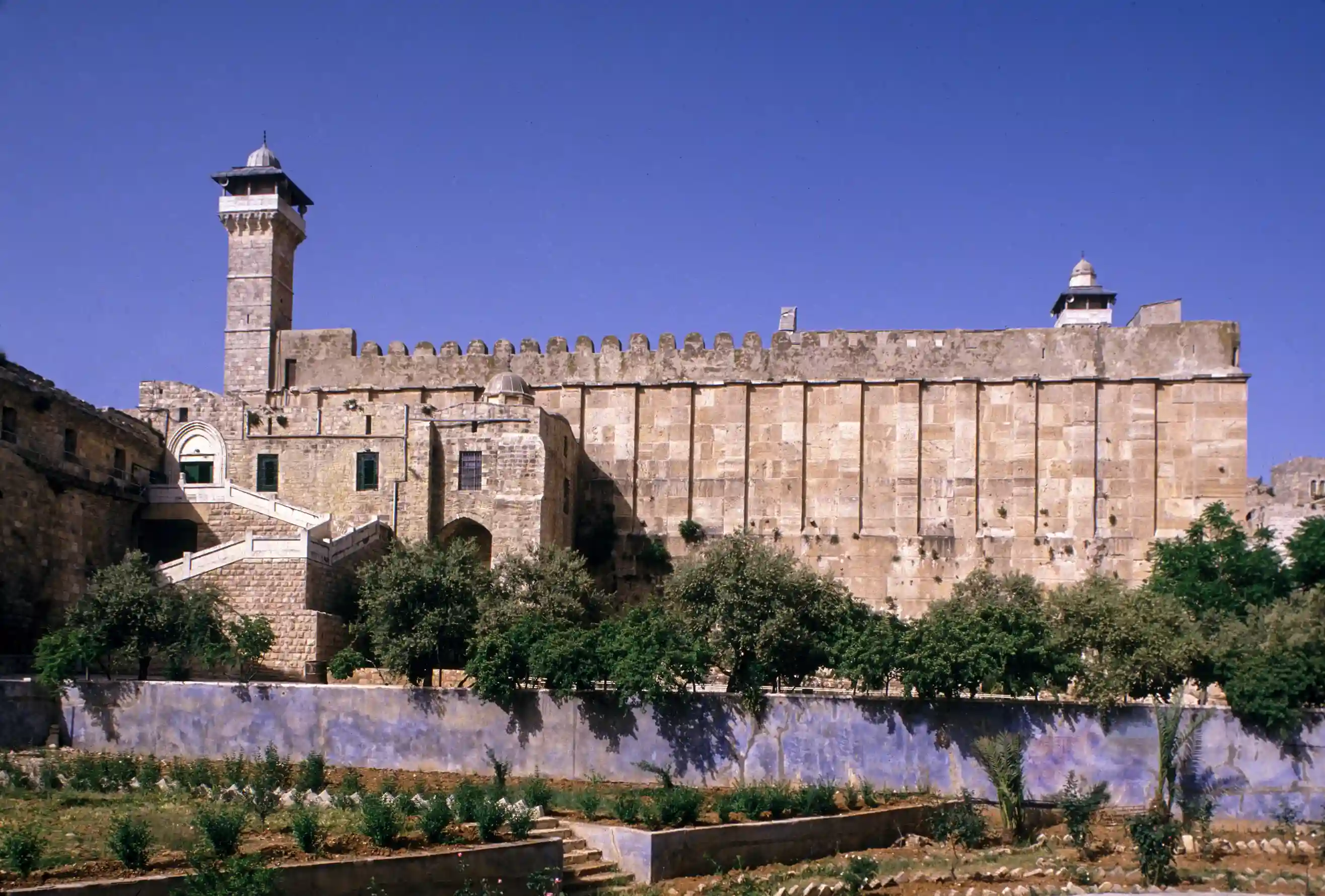Tomb of the Patriarchs, Hebron, West Bank
The Tomb of the Patriarchs, also known as the Cave of Machpelah, in Hebron, West Bank, is one of the holiest sites in Judaism, Islam, and Christianity, revered as the burial place of the biblical patriarchs and matriarchs: Abraham, Isaac, Jacob, Sarah, Rebecca, and Leah. Located in the heart of Hebron's old city, this ancient site has been a focal point for pilgrims for millennia, embodying shared religious heritage and complex historical tensions.
The site's history begins with the biblical account in Genesis 23, where Abraham purchases the Cave of Machpelah to bury Sarah. Subsequent patriarchs and their wives were interred there, cementing its sacred status. Archaeological evidence suggests the cave, beneath the current structure, dates to the Early Bronze Age, with the surrounding area inhabited since at least 2000 BCE. The monumental enclosure, characterized by massive limestone blocks, was built by Herod the Great in the 1st century BCE, resembling the architectural style of Jerusalem's Temple Mount. This Herodian structure, largely intact, measures 60 by 34 meters and encloses the cave, accessible only through sealed underground passages.
In the Byzantine period (4th–7th centuries CE), a church was established within the enclosure, reflecting Christian veneration of the patriarchs as forebears of Jesus. After the Muslim conquest in 638 CE, the site was converted into a mosque, named the Ibrahimi Mosque in honor of Abraham (Ibrahim in Islam), revered as a prophet. Crusaders briefly reclaimed it as a church in the 12th century, but Saladin restored Muslim control in 1187. The Mamluks and Ottomans later added minarets and cenotaphs, ornate tombs honoring the patriarchs, though the actual burials remain below.
As a pilgrimage site, the Tomb of the Patriarchs holds profound significance. For Jews, it is second only to the Western Wall, drawing worshippers who pray at cenotaphs like Abraham's and Jacob's, especially during festivals like Sukkot. Muslims visit to honor Ibrahim, with the mosque hosting daily prayers and Ramadan gatherings. Christians, though fewer, pilgrimage to connect with their biblical roots, particularly during Lent. The site's shared sanctity fosters a unique interfaith dynamic, but access is strictly divided: Jews use the southern section, Muslims the northern, with ten days annually allowing full access to one group while excluding the other, per a 1994 agreement following a violent incident.
The modern structure includes Herodian walls, a central hall with cenotaphs, a mosque, and a synagogue, surrounded by security checkpoints due to Hebron's volatile politics. Pilgrims experience a mix of awe and tension, navigating metal detectors to reach prayer spaces adorned with Islamic calligraphy and Jewish artifacts. The cave itself remains sealed, preserving its mystery.
Despite conflicts, including the 1929 Hebron riots and ongoing Israeli-Palestinian disputes, the Tomb endures as a pilgrimage magnet. Its UNESCO World Heritage status (2017) underscores its universal value, though it remains a flashpoint. For pilgrims, the site offers a tangible link to Abraham's legacy, uniting diverse faiths in reverence for a shared spiritual ancestor amid Hebron's ancient, contested landscape.

Martin Gray is a cultural anthropologist, writer and photographer specializing in the study of pilgrimage traditions and sacred sites around the world. During a 40 year period he has visited more than 2000 pilgrimage places in 160 countries. The World Pilgrimage Guide at sacredsites.com is the most comprehensive source of information on this subject.

